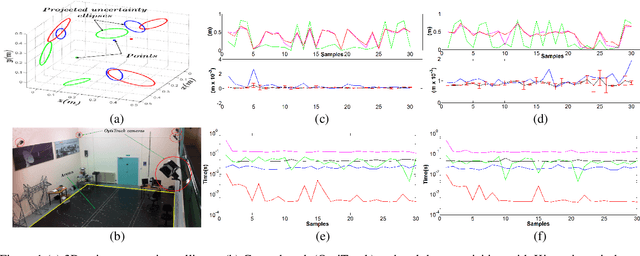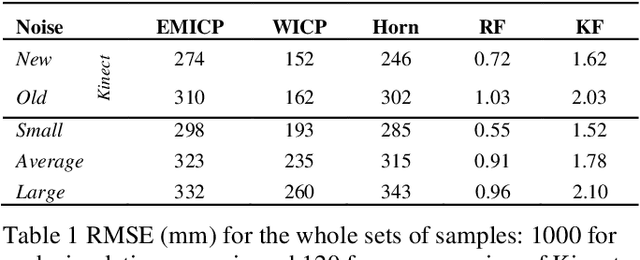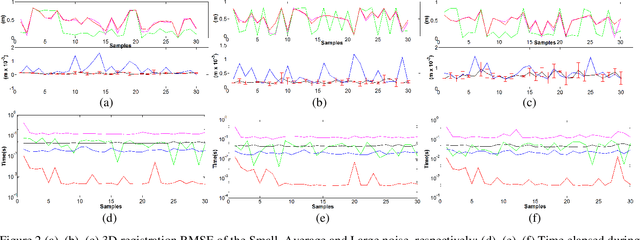Dowling Stuart
A recursive robust filtering approach for 3D registration
Oct 28, 2021


Abstract:This work presents a new recursive robust filtering approach for feature-based 3D registration. Unlike the common state-of-the-art alignment algorithms, the proposed method has four advantages that have not yet occurred altogether in any previous solution. For instance, it is able to deal with inherent noise contaminating sensory data; it is robust to uncertainties caused by noisy feature localisation; it also combines the advantages of both (Formula presented.) and (Formula presented.) norms for a higher performance and a more prospective prevention of local minima. The result is an accurate and stable rigid body transformation. The latter enables a thorough control over the convergence regarding the alignment as well as a correct assessment of the quality of registration. The mathematical rationale behind the proposed approach is explained, and the results are validated on physical and synthetic data.
* Accepted in the journal of Signal Image and Video Processing
 Add to Chrome
Add to Chrome Add to Firefox
Add to Firefox Add to Edge
Add to Edge